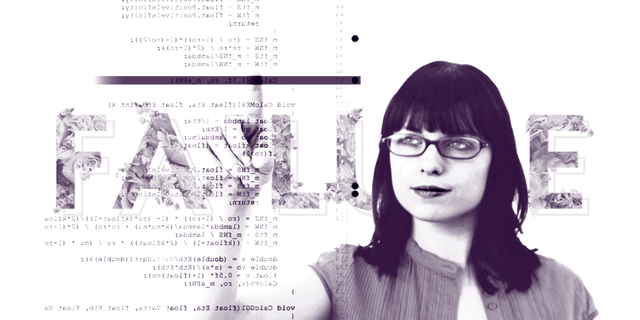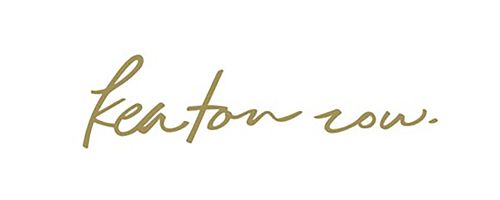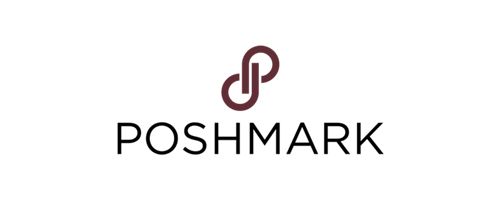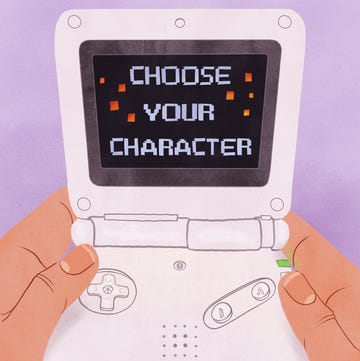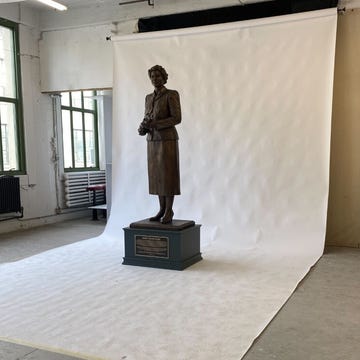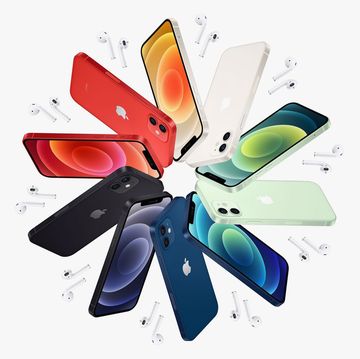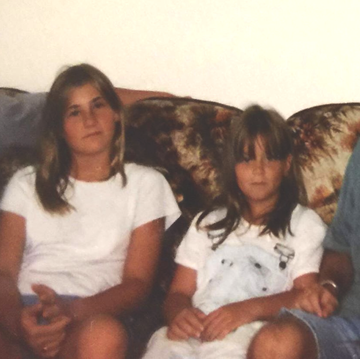Nobody likes to fail. But women take failure particularly hard—studies have shown that women are so averse to failure that they don't apply for jobs unless they feel 100 percent qualified. This hesitancy is understandable: When they do fail, women are judged more harshly than their male counterparts. Men, on the other hand, throw veritable failure parties; they're more likely to embrace "What doesn't kill you…" and plow ahead.
This week on ELLE.com, we've asked women to share their stories of failure. Not the kind of failure that led to some great business idea—just failure, plain and simple. We hope to shift the narrative about failure (it's okay! it happens!), or, at the very least, chip away at the idea that failure should be shameful or a secret. So here's to failing, loudly and proudly. Read more here.
By now, we all know the uphill climb that women in tech must endure. The statistics—they're bad. And while the numbers have started to improve, the fact remains that women in tech tend to face more sexism, skepticism, and discrimination than men do.
And while examples of women who have triumphed over it all are still too few, it seems everyone has an opinion about female failure. If you're a white dude, congratulations! Odds are you blame failure on external factors, on bad timing, on a market that wasn't quite ready for your genius. If you're a woman, however, failure is trickier.
A 2012 study from Babson College found that fear of failure was the biggest concern of female founders. "Even though women may have more years of education, it may not relate to self-perceived confidence in their entrepreneurial capabilities," said Candida Brush, a professor at Babson and the author of the report. Brush explains that women are still more likely than men to internalize a personal sense of blame for failure, considering it a manifestation of their weaknesses or insecurities.
As far as tech veteran Minnie Ingersoll is considered, there is only one solution to the stigma we've put on failure: We need to talk about it. Ingersoll raised $50 million in Series B funds for Shift, her latest start-up venture. She worked at Google for over a decade and launched Google Fiber. But she is as happy to discuss dropping out of Stanford as she is to cheer her more recent successes. "I wasn't always so willing," she explains when we chat over the phone this week. "But it's better to be open about it. People need to know that everyone goes through this and everyone can learn from it."
Which is why we called on nine female founders to get the scoop on how they learned to celebrate their failures.
Minnie Ingersoll, co-founder, Shift
Shift is an online marketplace for used cars.
The first thing I ever experienced that felt like a real failure was dropping out of Stanford. I had gotten really depressed and had an eating disorder. I was so overwhelmed I just decided I had to leave school and get better. So I moved home and focused on getting my eating disorder under control and working through my depression. I went on antidepressants, which made a huge difference. And then I went back to school the next semester. That was that. That was the amazing thing. I graduated like I was supposed to. I moved on.
But for me, it was a very profound experience. It made me more resilient, which I think is how a lot of people feel about that first real setback. It turned me into a more sympathetic person, which is more important in business than you'd think. And it just broadened my experience of the world.
For a while after, I felt a lot of shame about it—being depressed, being suicidal, having an eating disorder. But it got easier. I got way more open about it over time, because a lot of people struggle and I've found it's better to talk about it.
The thing is, start-ups have huge ups and downs. You have to get used to the fact that it's not always going to work out and that people will talk about you. If you're doing anything interesting and different, you're going to have detractors. So, you choose: You can decide not to do interesting things or you can be prepared to be criticized and you can count on failure.
I really like the 20-40-60 rule: When you're 20 years old, you worry so much what other people think of you. When you're 40, you realize you don't give a damn what other people think of you. And by the time you're 60, you realize that no one is thinking about you. Really. No one. So take risks and take chances, because you only answer to you.
And ask for help. Sometimes you don't know what you're even asking for. I didn't. But when I reached out, people responded. And I needed antidepressants and a lot of care, and you may not. But you'll need something, and when you do, having people around who are smart and who are invested is key.
Cheryl Han, co-founder, Keaton Row
Keaton Row delivers personal-styling services to busy women, tailoring looks to suit their day-to-day lives.
Failure is a key part of the process to achieving ultimate success. When you are growing a company, it is how you respond to failure that defines your relationship with it. Since we founded Keaton Row, there have been many roadblocks or situations that I had hoped would turn out differently.
When we launched Keaton Row in 2013, all our stylists worked remotely across the country on a freelance basis. While testing this format was an important first step that allowed us to build out our stylist platform, we soon realized it had significant limitations that had an impact on the level of service we were able to provide. So in 2015, we transitioned away from the freelance-stylist format and brought a select group of full-time, industry-trained stylists in-house.
Making the decision to transition the business in this way was scary. It meant scaling back in the short term, with the goal of growing over the long term, but what if that growth never came? It was a risk I was willing to take because it was the only way we could provide the kind of service we were committed to and the only way to make Keaton Row the kind of business we wanted it to be, even at the cost of short-term growth.
You learn very quickly when you start your own company that inevitably there are going to be many failures along the way. Failure comes in all different shapes and sizes. It is the ability to identify those failures and make changes as you grow that will lead you to success.
Marcela Sapone, co-founder, Hello Alfred
Hello Alfred is a butler service for normal people. It operates in New York and Boston and has raised more than $12 million since 2014.
I fail all the time—on a daily basis. But when I think back, the big failures that stand out also got me to exactly where I am today, running a company that touches thousands of people.
I didn't get into my first choice for college. I was almost fired from my first job...and my second. I've had my heart broken. I've made terrible presentations—on stage! I've had investors and people tell me what I'm doing is a waste of my time and silly. I've make wrong decisions that impact my team.
To be honest, failure feels terrible, especially when you give something your all. I don't think there is any getting around that. Ray Dalio says, "Failure is fuel for improvement." I really believe that. Instead of trying to wiggle away from the discomfort, be brave. Lean into it. Say it out loud: "I failed!" And let yourself have whatever emotions come with that. It's important because feelings are what motivate us to do really hard things. And once you've done that, put your failings and blame aside and really pull apart why you failed. Take responsibility for it. Own it. Take it as the beautiful, unique lesson that only that scenario could teach you. Learn from it.
If you continue with that practice, the failures only get more spectacular! You become more successful, so the challenges are different. Looking back, I wish I'd known how much I would learn from my failures.
Of course, I still get upset when I fail, but now I see failure as exciting. It gives us an opportunity to learn something—something we'll never do again. If you fail and get upset and do not reflect, you don't allow yourself to absorb anything from it. That's pain with no gain! Now I try to encourage people to fail at something every day, get comfortable failing. Learn from it. Use it.
Tracy Sun, co-founder, Poshmark
Poshmark is a social commerce app, which raised $25 million in new funding in April and has raised more than $70 million since its 2011 launch.
We pitched to many venture capitalists and time and time again we were told no. People would say, "You're trying to build a massive peer-to-peer social commerce platform 100 percent on mobile? You're crazy." Luckily, we found a few innovative investors who believed in our vision and backed the company.
When you run a start-up, you are constantly venturing out into the unknown. You have to try a lot of different things to see what works and what doesn't. That's why people say learning what doesn't work is just as valuable as learning what does.
Particularly as an entrepreneur, it's so critical to strip away the stigma of failure and become a student of outcomes, regardless of whether they are positive or negative. I started to really grasp that concept after many spectacular failures. If I'd understood that when I was just starting out, I could have saved myself a lot of heartache.
Tracy Young, co-founder, PlanGrid
PlanGrid is on a mission to disrupt the construction business. It took on a $40 million investment in 2015 to expand its product.
With failure, there's always this moment where everything feels like it's in complete shambles, and I'm so tired that I don't think I can physically, emotionally, or mentally deal with it anymore. And it is always in that moment that I make a decision: Am I going to give up or deal with it? Acknowledging I've made a mistake and owning up to it is the key. I don't know about anyone else, but I learn from making mistakes.
It is okay to make a decision, because you can always make another decision immediately afterwards.
Kellee Khalil, founder, Loverly
Loverly is a virtual wedding planner and content platform. It raised $3.5 million in Series A funding.
When you're running a start-up, failure is a part of the process. When my partner joined the business, she instilled something in me that's been so valuable. It's "fail fast." It means learn as much as possible from the low moments. Failure is not final. It's feedback.
In 2015, we tested e-commerce on the site. We'd been hearing from our advertisers and brand partners that we were one of the top converters, directing sales to their sites. A few of them wanted to collaborate on an e-commerce initiative. We loved the idea. We had the audience, we had the content, and we knew we were driving transactions. We partnered with three brands to create the Loverly collection. We launched it around February 2015. It became evident pretty quickly that while we had the demand from people operationally, it was way more challenging to execute in a way that would provide real revenue for us. After four months, we shut it down.
While it was still up and running, however, we had offered a customer-service chat on the website to let people ask questions about the products. We realized a lot of people were asking us questions that were totally unrelated to the products we were selling. They were like, "How do I find a photographer?" Or, "I need to generate a wedding hashtag."
So we went back to the drawing board and were like, "What can we do with this?" We looked at the feedback from that failure and that's how we came up with our Lover.ly Virtual Wedding Planner. And it's been this huge success. Every single day, we take the feedback of our users and try to turn it into positive change for the platform.
I think, as women, we are super attached to our products and our businesses, and sometimes we take it more personally than we should. Once you realize it's not about you, really, it makes it way easier.
Nicole Sanchez, founder, eCreditHero
eCreditHero is a quick and easy way to start to rebuild credit and pay off debt. Sanchez is the founder of VIXXENN, which aims to transform the black hair care industry.
Our company came out of a "pivot." We started with a different idea and weren't getting much traction because potential users couldn't afford it. When your business isn't working and you know it's not working, you can feel defeated. And as women, we feel we have to prove so much. The pressure is overwhelming.
The best advice I got during that very difficult time was to get clarity and be honest with myself. Ask yourself: What do I want? Why do I want it? How do I want to feel? It's so important. Once you get clear on yourself, you can get clear on your business.
What we finally realized was we had the right market but were solving the wrong problem. Once we got clear, got honest, and got working, our business started taking off with breakthrough growth.
Rejection is crushing. But leaders don't stop trying. They evolve, regroup, and keep on pushing. As an entrepreneur, I have grown, [the company has] grown, and that is what entrepreneurship is all about. Grit and hustle. Keep on pushing.
Melody McCloskey, founder, StyleSeat
StyleSeat allows users to book beauty and wellness appointments on the go. It raised $25 million in Series B funding in July 2015.
Early in the StyleSeat story, we were pitching a venture capital firm. At the time we really needed the capital, and having them on board could have meant the difference between success and failure. As I gave them an update on the business—that we were the largest beauty services platform with huge organic growth—they started to ask question after question after question. We just didn't have the answers. They decided right then and there not to invest. It was devastating. We had fought so hard to that point to build the business, and it felt like a dead end. After we left the offices I cried, which I've hardly ever done in my life. I felt like a complete failure as a CEO.
Part of being a start-up CEO is experiencing regular ups and downs. I probably have three major ups and downs a day. I think I'm better at dealing with them than I used to be—I certainly hope I am. You have to use data for all decisions, have a solid strategy ahead of you, and contingency plans. You don't know the future, so you just have to be smart about the guesses you make and how you bob and weave along the way.
When you've been in the game longer, you learn that success is just as much about what you do when someone says no, and how you make that work, as what you do when something goes your way.
Failure is inevitable on the path to success. How you deal with it is what will define you. Getting good at it—learning from it, moving beyond it quickly—will give you an edge.
Melanie Perkins, co-founder, Canva
Canva is an online graphic design platform. It completed its first round of funding of $3 million in 2013.
Building a start-up takes a long time. It's been 10 years since I first came up with the idea when I was teaching design at university. I knew that the web was going to completely change the design industry, and I wanted to build that future.
It took me three years and over 100 revisions of our pitch deck to raise money. I took in the feedback from each meeting and used it to revise the deck to better explain the market, our vision, and the problem we were solving. And at some point, I realized that if I was going to accept investment, statistically speaking I had a pretty high chance of failure.
I made a conscious decision to start a company anyway, knowing that there was a high probability of failure. If you have a crazy, wild dream, the best thing you can possibly do is to get started. Taking that first small step is incredibly scary—but so worth it.
